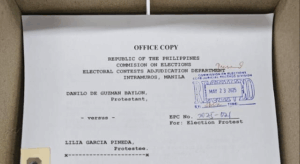Migrants sending money to their families around the world have never had it better, at least as far as costs are concerned, with cross-border transfers having reached a “lifetime” low, the World Bank said in a new report.
In its Remittance Prices Worldwide report this week, the multilateral lender said cash transfers done through government-run postal services were still the cheapest way to send money. Banks remain the most costly, although fees continue to decline.
Online channels are also cheaper alternatives for all migrant workers, the report stated.
The report showed that in the second quarter of 2015, the average cost of sending remittances in the world was 7.68 percent of the amount sent, stable from the previous quarter’s 7.72 percent.
Average weighted costs, which take into account fees relative to amounts sent, stood at 5.92 percent (from 5.94 percent in the first quarter), indicating that “costs continue to be lower where larger volumes are transferred.”
The report tracked the cost of sending remittances for three channels, namely commercial banks, money transfer operators such as Western Union, and post offices. Based on the data for the second quarter, commercial banks continue to be the most costly, despite a notable decrease since the last quarter.
Remittances form a pillar that keeps the Philippine economy afloat. Last year, cash transfers to the Philippines reached a record high of $24 billion, accounting for nearly a tenth of domestic output. The Philippines is among the top four recipients of remittances in the world, together with China, India and Mexico.
The cost of sending remittances using commercial banks fell below 11 percent for the first time to 10.96 percent, but remains significantly higher than the global average.
Sending money via post offices and money transfer operators costs 5.14 percent and 6.59 percent, respectively.
In the meantime, online products emerged as one of the cheapest kinds of services for sending money across borders, with the average cost at 5.48 percent.
The World Bank also noted that online services were becoming “more represented in the sample,” a testament to its rising popularity.
“A number of providers are emerging in the online space, offering senders different options to pay for the transaction,” the report said.



